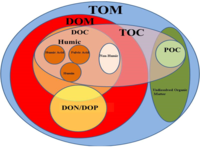
Photo from wikipedia
Abstract Vitrinite reflectance is perhaps the most widely used property to calibrate paleothermal histories, and the most common model for that purpose is Easy%Ro. This paper reviews the origin of… Click to show full abstract
Abstract Vitrinite reflectance is perhaps the most widely used property to calibrate paleothermal histories, and the most common model for that purpose is Easy%Ro. This paper reviews the origin of Easy%Ro as a simplification of Vitrimat. Weaknesses of the original versions are discussed, as are historical attempts to improve them. New versions of Vitrimat and Easy%Ro are presented that use substantially higher frequency factors and activation energies, and variations of these versions are derived for vitrinite itself and hydrogen-rich macerals and bitumen. The Vitrimat models are based on the original premise that reflectance correlates primarily with H/C ratio and secondarily with O/C ratio. With this approach, the reflectance of different types of organic matter is automatically calculated based on the initial composition of that organic matter. This general approach may also serve as a pathway with appropriate cross-reaction terms to calculate suppression of true vitrinite reflectance matured in oil-prone rocks containing significant concentrations of liptinite.
Journal Title: Organic Geochemistry
Year Published: 2019
Link to full text (if available)
Share on Social Media: Sign Up to like & get
recommendations!